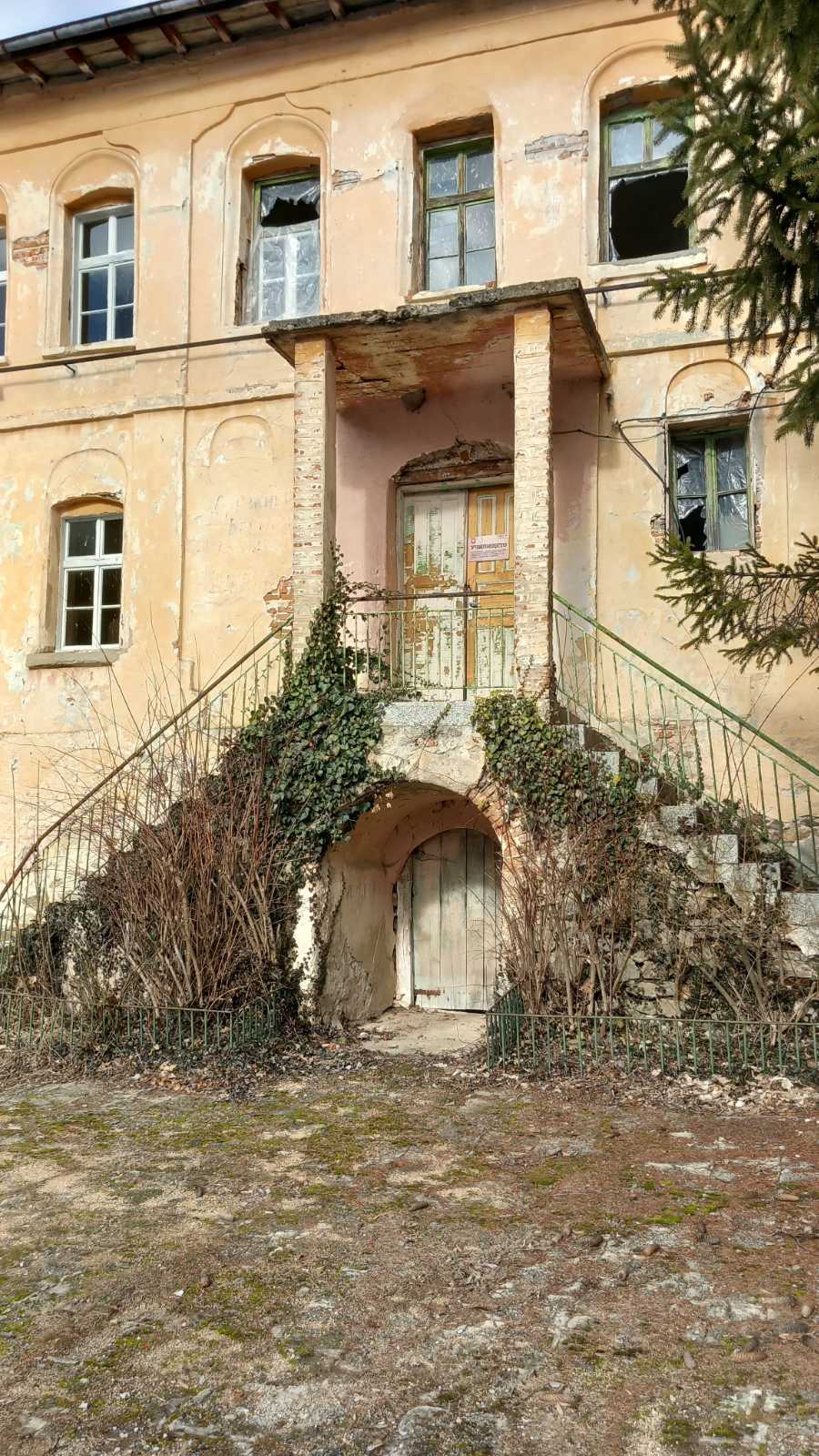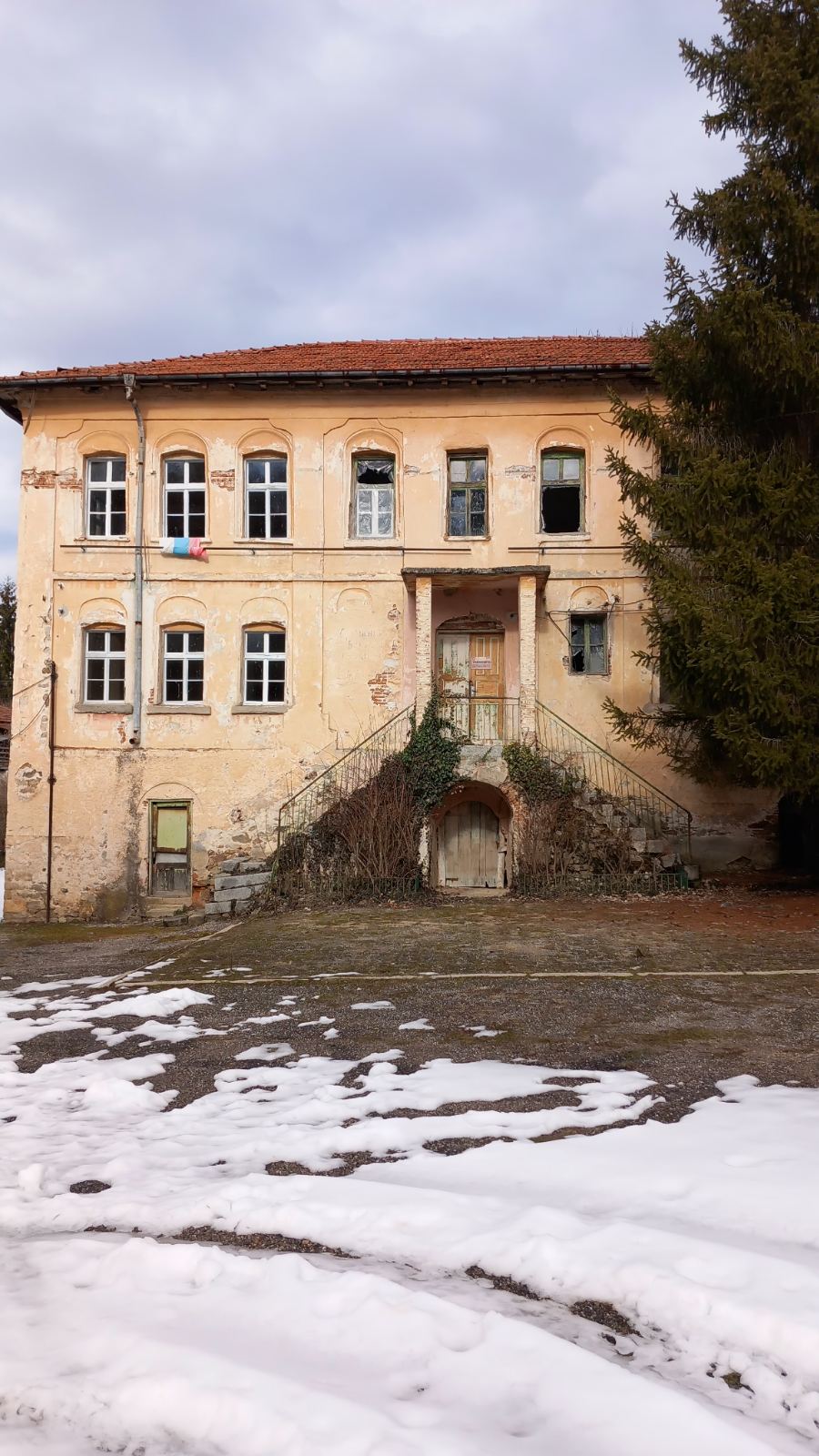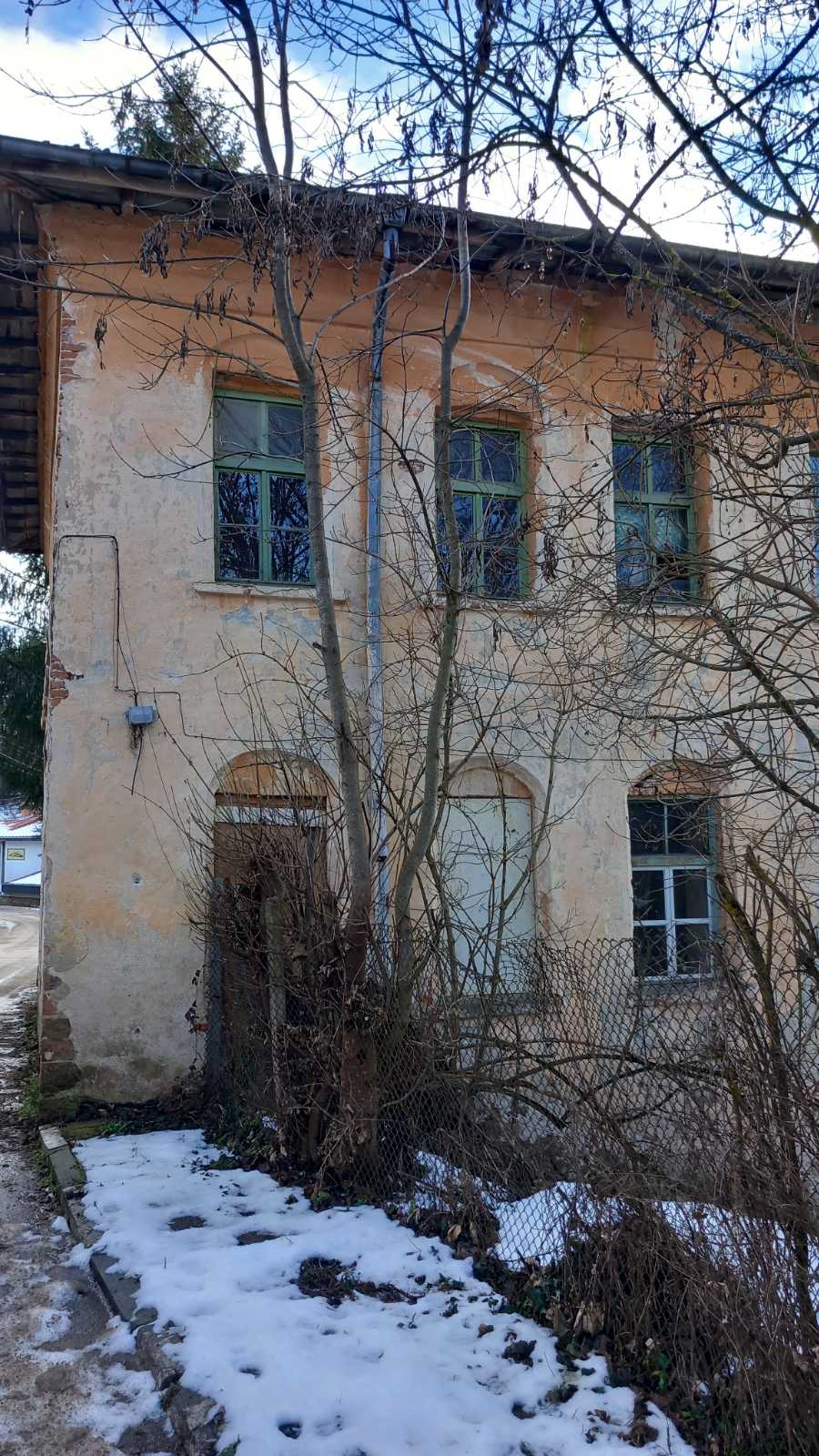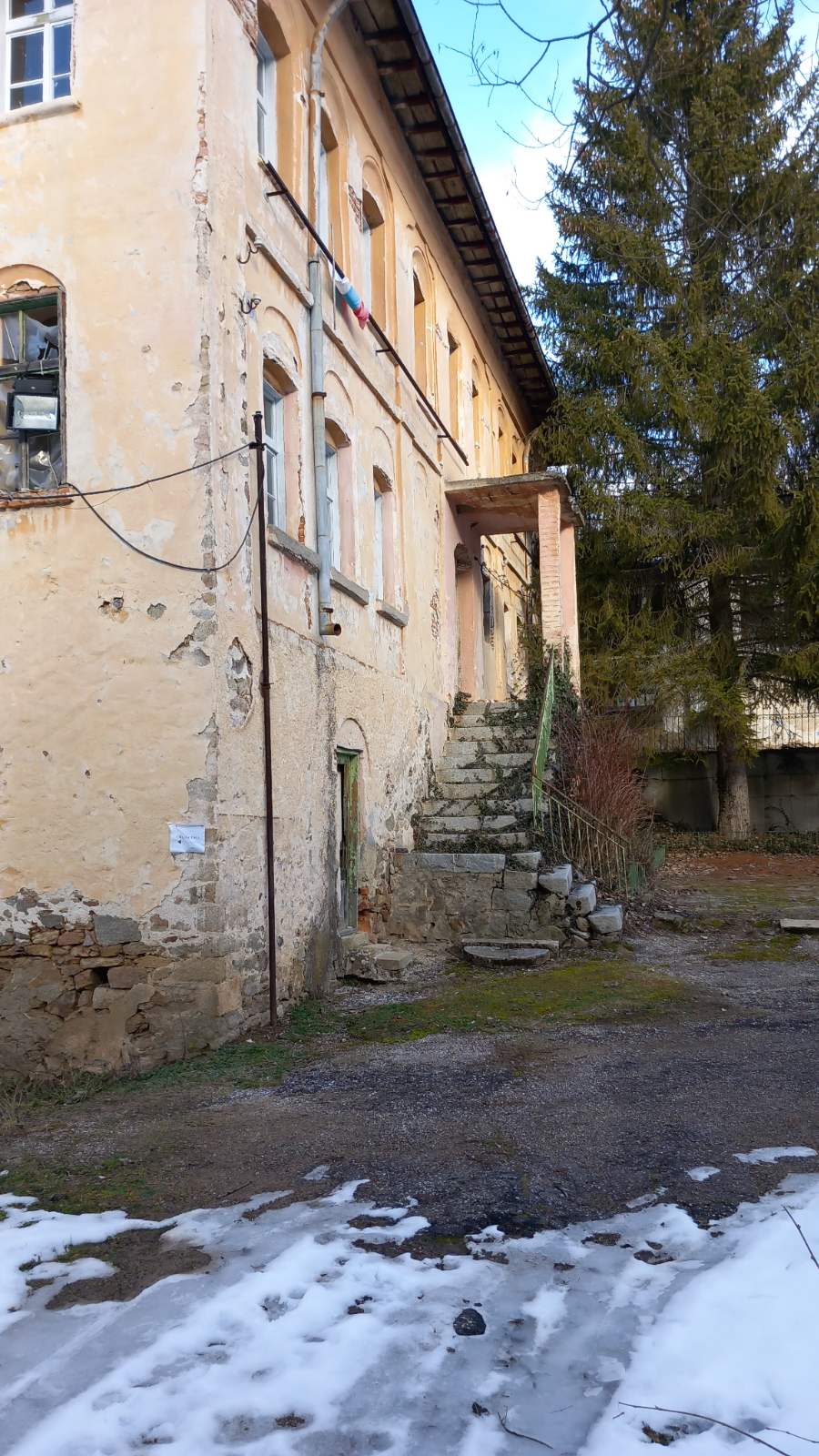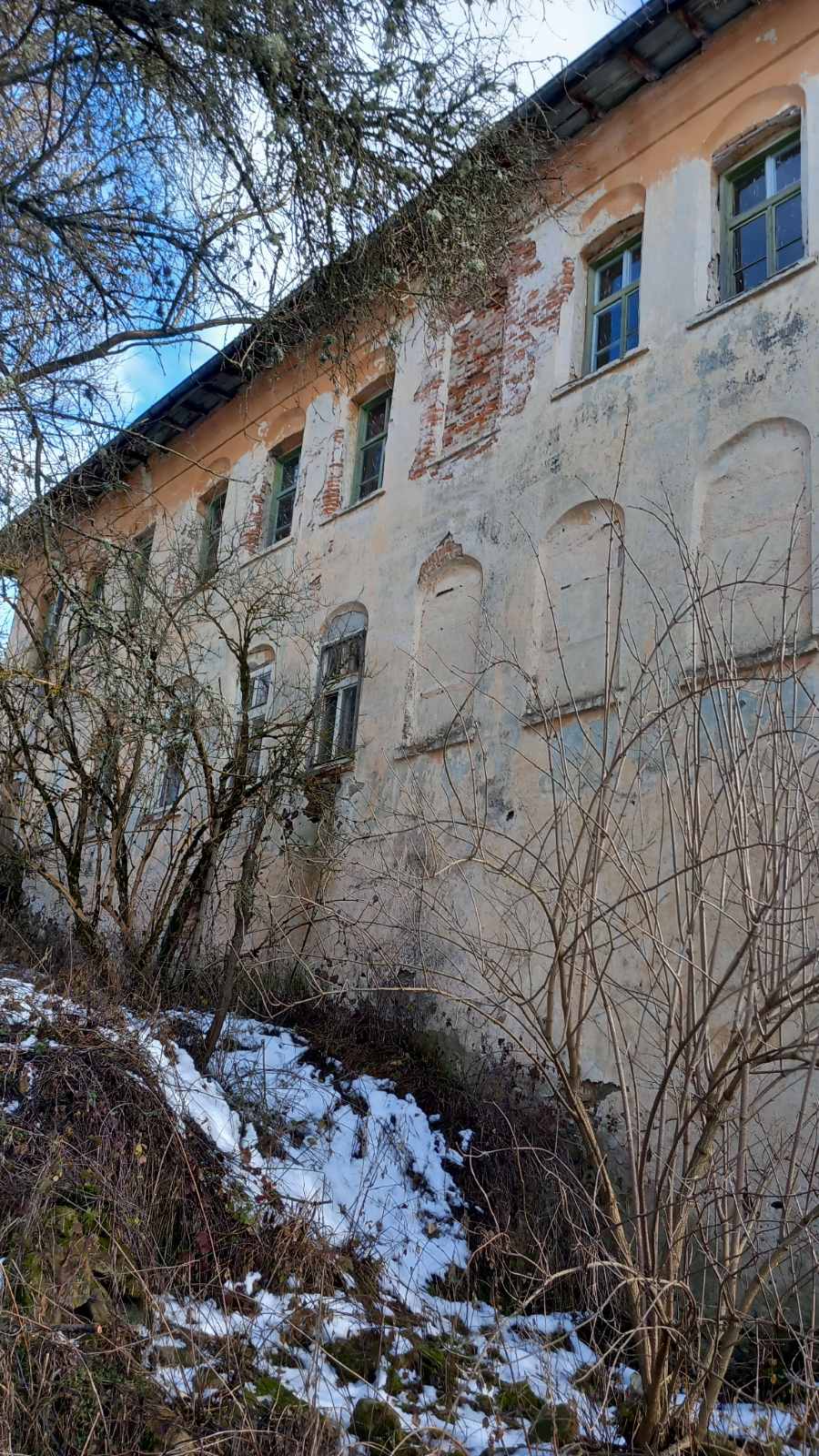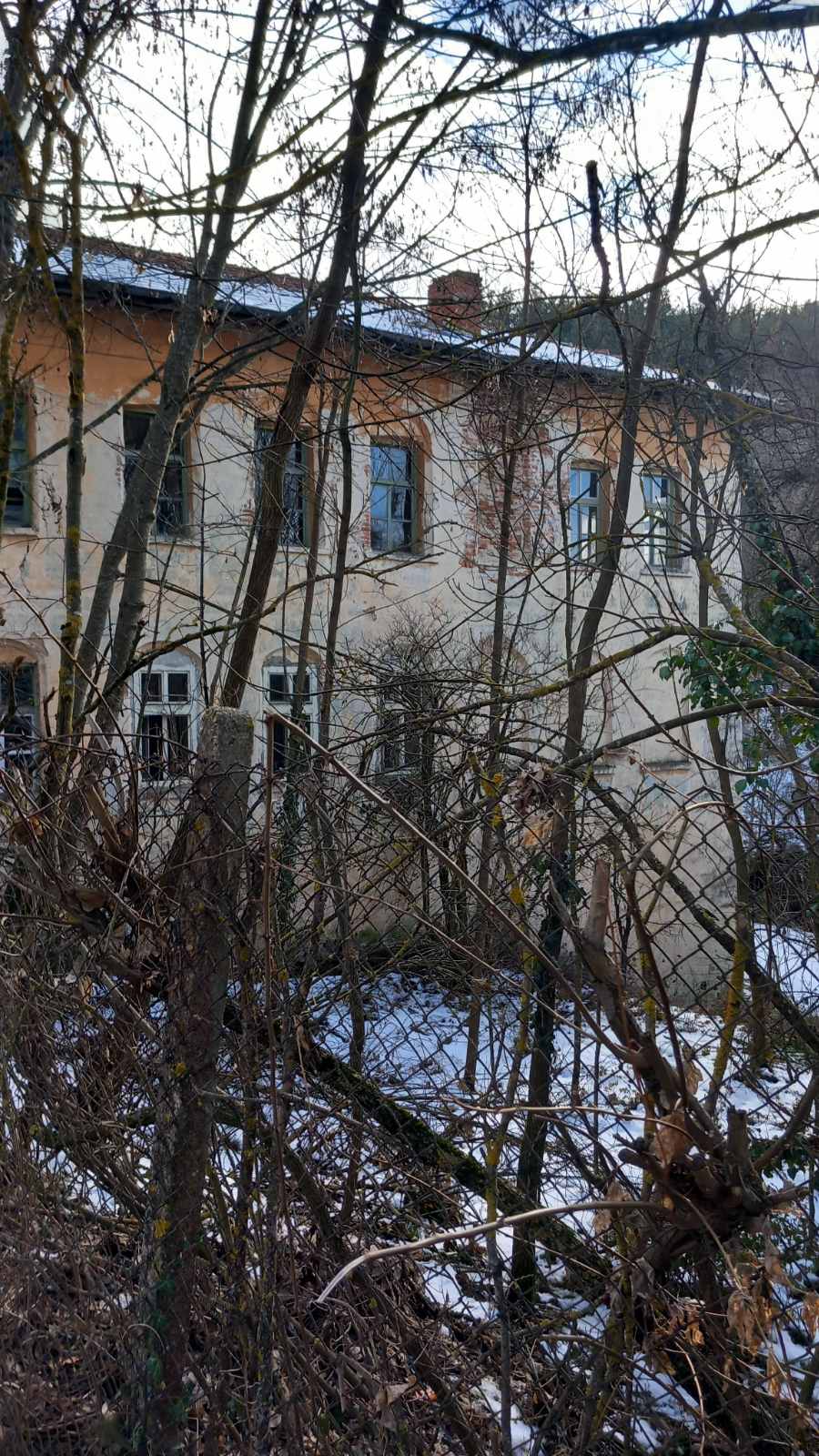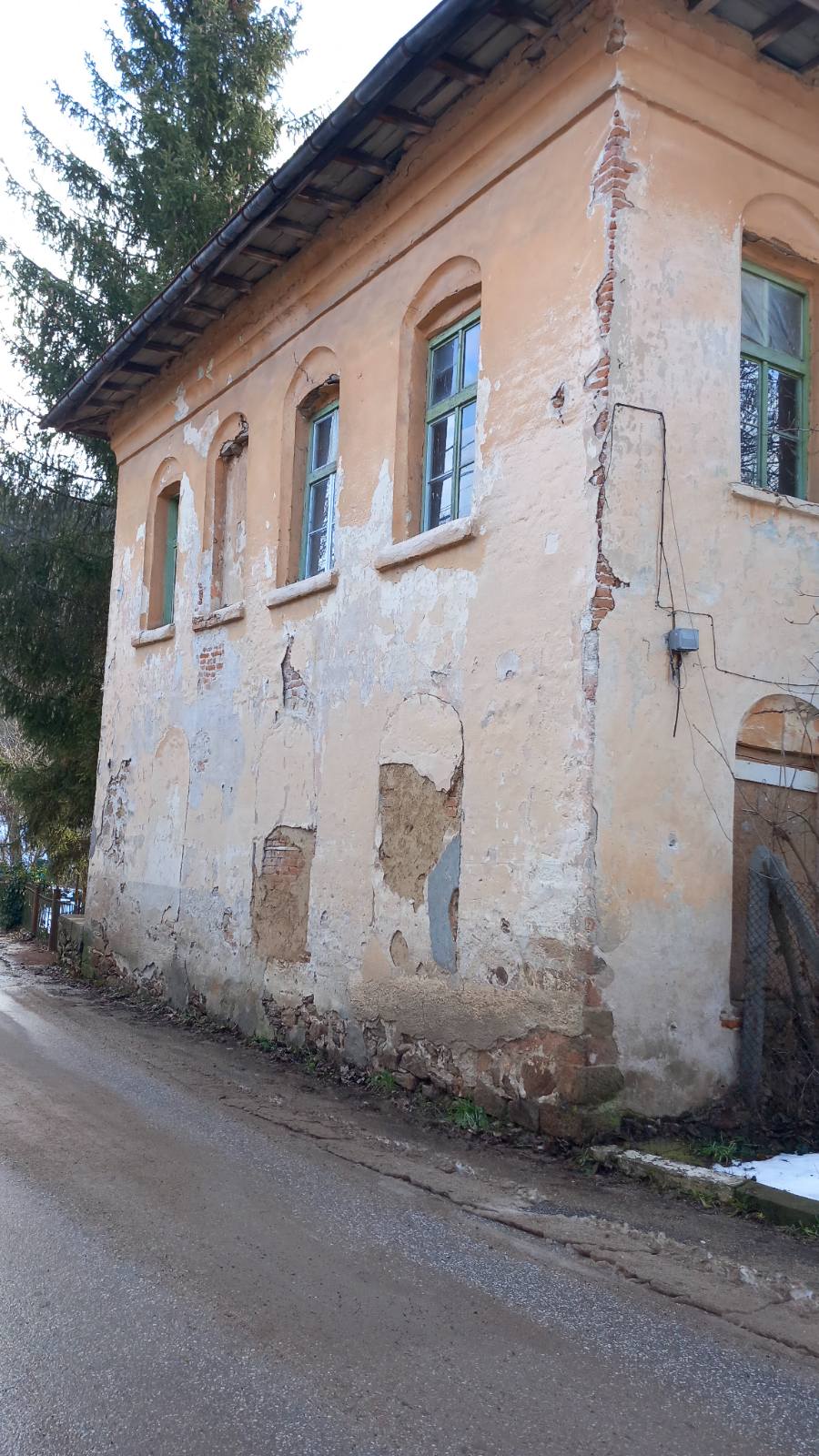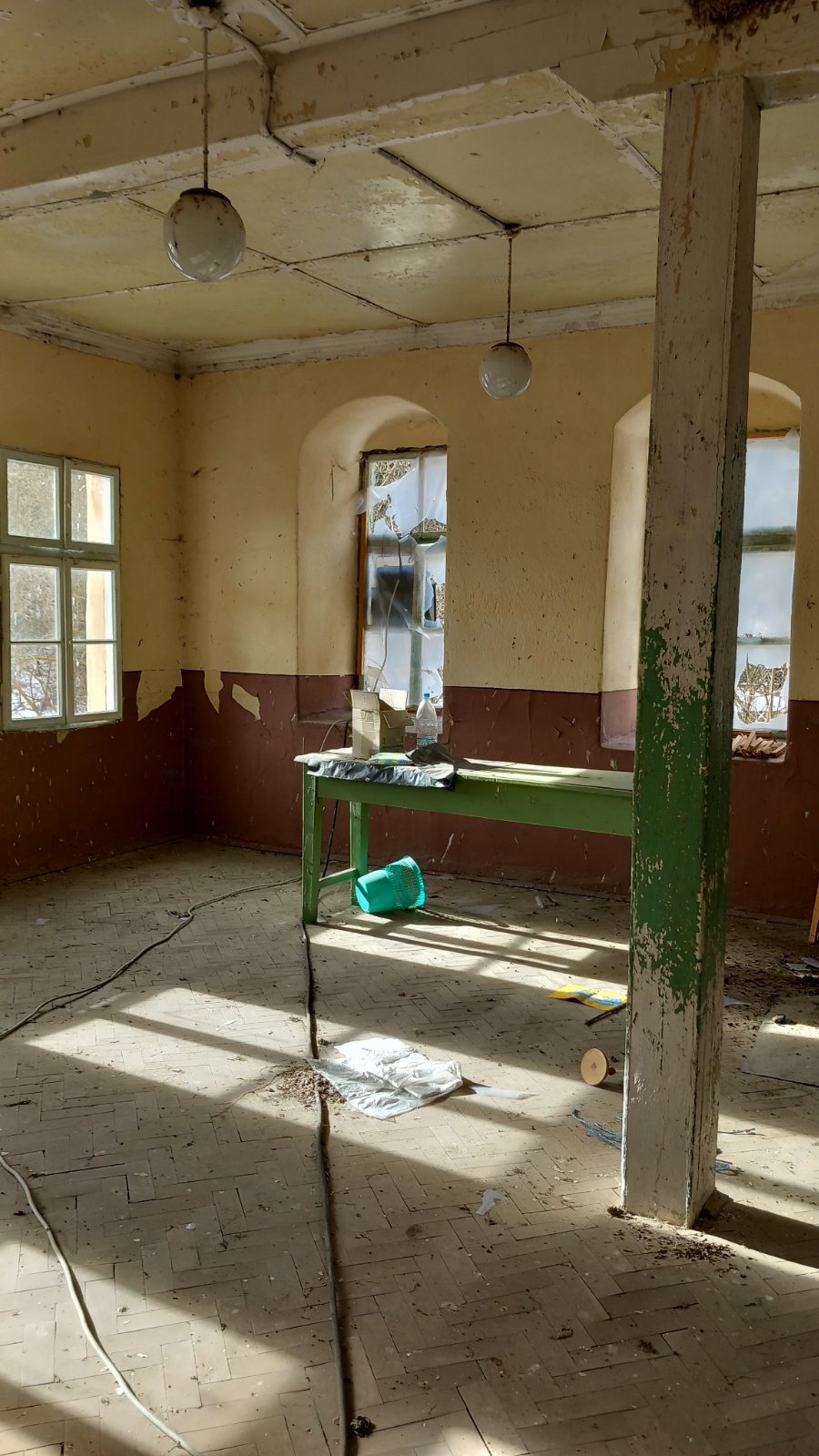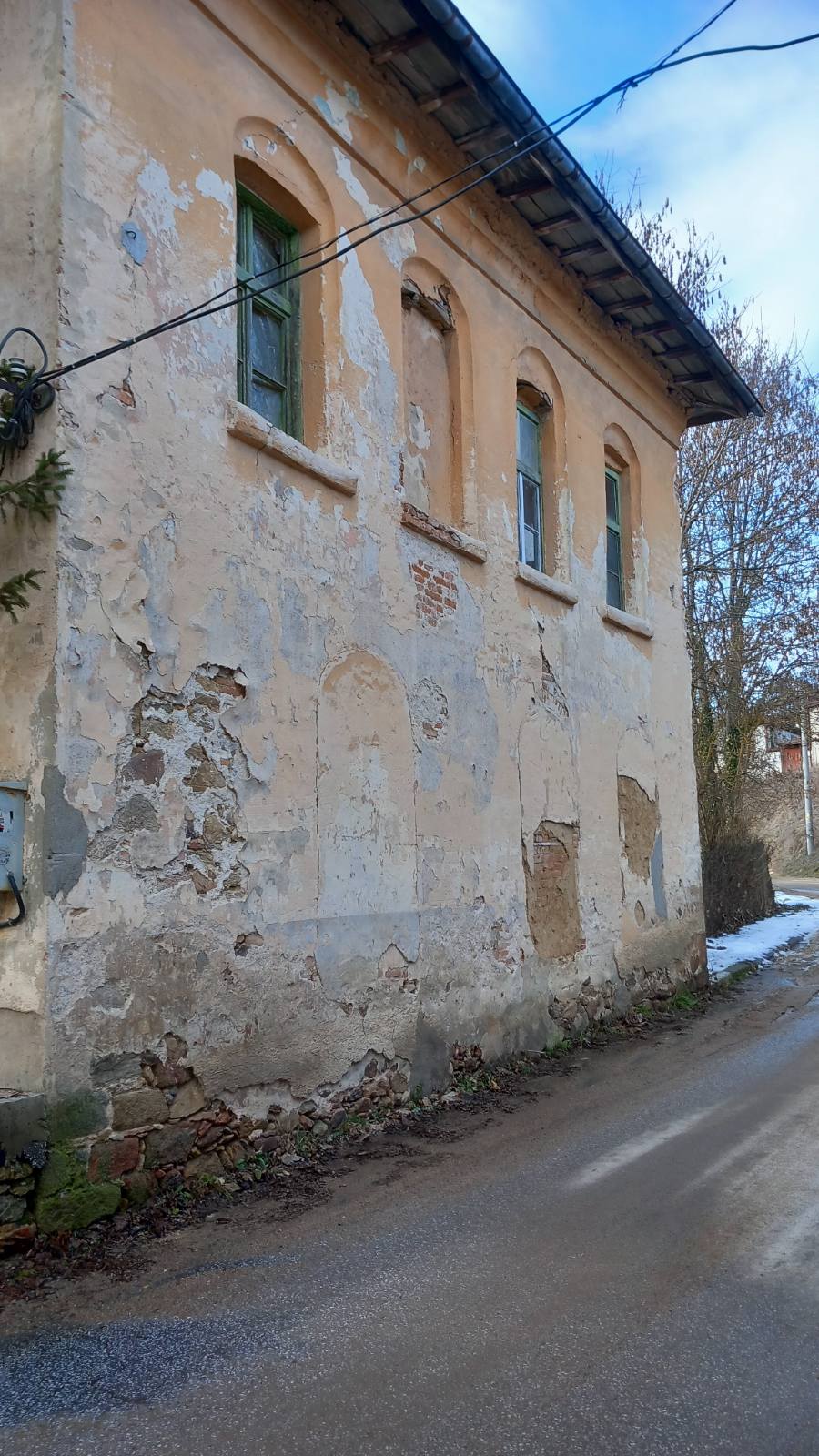Svezhen, 1880 “School” building Revival
Svezhen, Bulgarian Revival 1880 Closed “School” building renovation into Educational cultural center
Renovation of the unique built in 1880 Bulgarian National Revival closed School building and patio located in Svezhen village, shall preserve the authentic architecture heritage, craftsmanship, culture, knowledge and traditions. Further adaptation and re-use as educational cultural touristic center ensures conservation of the national identity as part of the European diversity, bringing value for the local people, regional development and offering to visitors accessible memorable experience.
Bulgaria
District 14r, land property No XII – 258 of the Plan of the village of Svezhen
Early initiative
Yes
Yes
Yes
No
No
PDV07: Brezovo (BG)
The ancient part of the village of Svezhen has been declared Bulgarian National Revival Architectural and Historical Reserve of 110 separate architectural sites (mainly houses) and parts of the infrastructure. The current initiative is a way to continue and amplify the Integrated Territorial Investments No BG16FFPR003-2.001-0068 related to the Renovation and Development of the Architectural and Historical Reserve. However, status of the School building is not protected as cultural monument thus at risk of lack of funds, but it is part of the Reserve assembly. The building is of 170 m2 a semi-solid of two floors and ground floor, and yard of 1940 m2. The School functioned until 1984 when due to reduced number of children it was closed. The building embodies the Bulgarian National Revival architecture, construction, craftsmanship and traditions. Its centuries-old heritage holds high cultural and historical value, identity, knowledge and traditions of the local people and the Bulgarian nationality, being part of the cultural richness and diversity of Europe. The initiative shall preserve the authentic unique building and patio and inspire how heritage can continue bringing value today by adapting it and bringing it to life through educational cultural touristic center with educational, cultural workshops, calligraphy of the Adjarian Literary School, crafts, arts, gallery and exposition activities, concerts, etc. dedicated to historical, literary, cultural heritage preserving the national identity and European cultural diversity. The re-use of the School building shall contribute for sustainable inclusive economic and social development of the village and region, improve the environment and aesthetics, raising and transforming the standard and model of living in cooperative, inclusive, accessible and affordable manner for everyone and stimulating young people to stay. The initiative shall stimulate tourism and attract visitors and users of all ages and nationalities.
Renovation
Adaptation
Preservation
Identity
Re-use
The initiative to preserve the authenticity and adaptively prolong usability of the 1880 closed School building and patio instead of abandonment and demolition brings multiple and sustainable benefits for the people and environment. The holistic approach of extending the life of existing building conserves building materials, saves carbon emissions, energy, avoids waste of eventual demolition, consumption of new land and use of new resources to build again. It is always better to re-use over replacement. Preserving the authentic building and incorporating it along with modern innovative sustainable solutions triggers potential of sustainable interaction between buildings and social and natural environment. The initiative envisages cooperation among many transdisciplinary experts in order to achieve the best synergy between authentic architecture and construction heritage along with energy efficient, ecofriendly solutions, sustainable materials, sustainable construction technologies and eco-design, as well as green public procurement when selecting contractors for the implementation phase in order to ensure best synergy between authentic built, sustainable solutions and natural environment. The initiative of School building preservation and bringing it back to life as educational cultural touristic center has triggering effect to inspire and be exemplary to other communities to initiate at their own local needs the idea of cherishing and preserving, adapting, re-using and taking care of the built heritage and already built environment using the potential to meet contemporary social needs at affordable cost by circularity and sustainable preservation of the raw materials, resources, the ecosystem and nature through avoiding waste and caring of the natural and built environment. This promotes accessible healthy high-quality lifestyle and experience for residents and visitors at sustainable, timesaving and resource efficient manner with respect to climate.
The holistic initiative to renovate, preserve authenticity, adapt and revive the School building and patio represents act of cherishing the beauty and cultural value of the Bulgarian National Revival heritage. The uniqueness of the School from 1880 is part of the assembly of the ancient Svezhen village declared Architectural and Historical Reserve. However, the building is not protected as it does not dispose of status of cultural monument thus it is endangered of lack of funding and maintenance and eventual collapse. The initiative is a chance for transformation of the unique authentic building and its re-use as educational cultural touristic center thus accumulating positive emotions and cultural benefits through improved aesthetic environment, enhancing the quality of experience for local people and visitors who would enjoy the Revival heritage, spirit, culture and traditions. It is of high value to bring back to life the aesthetic heritage for the next generations, making them learning and appreciating the aesthetic cultural values. The activities that shall take place and be co-developed and self-governed by the local communities in the renovated center are sources of vivid memory of the spiritual values and beautiful traditions, handicrafts, calligraphy of the Adjarian Literary School, local heritage and art expositions, concerts, workshops etc. that shall bring value, emotional and memorable, accessible and affordable experience for everyone. The initiative embodies great potential of replicability by inducing inspiration for other communities to appreciate more the beauty, value, authenticity and uniqueness of heritage designs, architecture, construction, craftsmanship and traditions by paying tribute to rendering good care and respectful attitude towards the importance of the aesthetic experience for the quality of living and community wellbeing in inner peace, sense of belonging and in harmony with the surroundings.
The initiative represents inclusive wide public participation, equality, accessibility, affordability and embodies inclusive decision-making governing model and example of new social model of living together. The formulation of the project concept with the local people and communities participation in detecting the needs and formulating the ways for achievement and implementation for everyone’s benefit in open non-discriminatory approach shows inclusive spirit at all initiative phases. The close cooperation among local municipal administration, authorities at different levels, institutes and local people and communities from the start to the final implementation helps to change the mindset of the people and make them more community engaged, inspires sense of belonging and care for everyone which creates values and brings transformative benefits. Solidarity and cooperation are keys to bring to life new way of tackling local challenges and finding solutions in a way that no-one is left behind. The educational cultural touristic center with active communities’ participation shall preserve local heritage, traditions, history, culture and be accessible and affordable for everyone bringing value to the local people and for national and international visitors. National identity and European cultural diversity shall be preserved. The inclusive nature of the initiative is example and holds valuable replicability potential as it shows how cooperation among all the groups of the civil society and authorities leads to major achievements in finding affordable accessible solutions to challenges, taking into consideration all the aspects of the social organization and civil responsibilities. This embodies modern approach to decision-making process, governing models, intergenerational exchange, stimulates social inclusion, initiative and civil engagement and accumulates significant public energy that makes a difference and can be example for every society, community and place.
The initiative concept and participatory process since the design through all phases of the development, implementation and accomplishment have been and shall be actively, closely and wide publicly developed, coordinated, agreed, planned, implemented, led, governed with participation of the people, local communities, end-users, stakeholders, experts, etc. All the expressed positions, proposals, declarations have been and shall be taken into consideration when paving the road to the formulation of the project idea, concept and development plan for further implementation. The initiative participatory process and approach implies local communities and organizations to manage and self-govern key processes and outcomes, to initiate and co-lead future actions and develop activities of the educational cultural touristic center. The role and active involvement and dedication to each phase of the initiative of end-users and people affected and benefitted is crucial and represents essential part of the innovative governing model and decision-making process, new social model of living together, finding solutions and responsibly implementing the actions with care in achieving responsible attitude and contribution towards the common challenges and common efforts for better environments, surroundings and organization of places. Many locals are professionally engaged with local handicrafts, crafts, traditions, art activities, etc. and they shall develop activities and self-govern exhibitions, workshops, art and educational activities, etc. and be among the end-users of the center. The envisaged activities and expected contributions from all the society, stakeholders and local communities are inherent part of the entire initiative lifecycle. The re-use of the built heritage shall contribute to the development of the region, conservation of local, national and European identity, improved sustainable life environment for everyone and accessible memorable experience for visitors.
The initiative consists of multi-level approach and engagement across scales and fields thus providing both horizontally and vertically essential collaborations with the aim to tackle issues of regional, national and global level through local solutions. The aspiration is to reach impact and have contribution beyond the initial project scale and connect different dimensions. The initiative connects horizontally civil society, end-users, communities, experts and stakeholders to interact and share initiative responsibilities and leading roles of key phases of the development and implementation process. The initiative brings together also vertically stakeholders, authorities, institutions, experts, thus expanding the initiative beyond its own dimension. The local municipal authorities interact and shall cooperate with regional and national authorities and institutions, in the field of the initiative such as regional institutions in the field of education and culture, Regional Department of Education Plovdiv, National Institute for Immovable Cultural Heritage, etc. The vertical scale interaction of stakeholders, communities, experts, society is also implemented as local communities interact and cooperate with communities, social groups and experts at regional, national, and European level regarding the concept, development and implementation phases. Cooperation at the exploitation phase of the educational cultural touristic center is planned among local communities and national associations, regional educational centers, foundations, educational institutions. European international cooperation is also envisaged to achieve international exchange with educational and cultural purposes. This multi-level initiative provides vivid example of how authentic cultural and architecture heritage can be preserved, adapted and brought back to life thus continuously adding value for the local people and the society at local, regional, national and European scale.
The initiative applies interdisciplinary and beyond-disciplinary collaboration approach that brings together knowledge from different fields and practitioners and tackles different aspects of the project such as social, cultural, artistic, architectural, construction, ecological etc. The social inclusion implies also consideration of knowledge, experience and active participation from non-academics, the public and local communities. Expertise of different disciplines such as architects, designers, engineers, constructors, planners, energy efficiency specialists, safety experts, culturologists, craftsmen, experts of immovable cultural heritage, restorers, educational experts, socially engaged associations, cultural and educational exchange foundations, educational institutions, institutes, interior designers, experts in local traditions and history, curators, etc., public authorities representatives have been consulted and shall continue actively participate in all the development and implementation phases of the project including during the exploitation and functioning of the final objectives of the envisaged educational cultural touristic center. The involvement of different experts and interdisciplinary approach ensures sustainability of results and implementation of best solutions. Successful and lasting transformation of the built heritage involves not only academics but also non-academic knowledge engaging everyone – especially users and residents, including younger people with their engagement, responsible attitude and good care towards the values and needs of the buildings, common spaces and surroundings.
The initiative consists of innovative approach towards built environment that suffers from abandonment, disuse, lack of maintenance, poor-quality partial renovation actions, lack of funding and risk of demolition due to erosion and natural climate activities on the building materials. The project idea instead of letting it collapse is to safe the authentic school building from 1880 which is closed due to lack of children and is not protected by law as it is not rendered a cultural immovable monument status is very ambitious yet respectful initiative endorsed by both the public authorities and local people and communities with the ideal intention to safe national and historical identity and memory, traditions and heritage. The innovative governing model of inclusive cooperation in the decision-making process and all the initiative phases of development and implementation, stimulating social initiative, common efforts and mutual respect of the local people and engaging them with responsibilities to lead key project development and implementation phases makes the initiative pilot endeavor that brings the potential to accumulate significant public energy able to transform the reality, to be a game-changer. The general social sense of helplessness can be overcome by changing the mindset and letting people believe in themselves and in their transformative actions to bring to life results. To be part of the establishments of innovative social model of self-governing, living together in accessible, affordable manner without leaving no-one behind. Other aspect of the innovative character of the initiative is to combine modern technical innovative solutions with traditional craftsmanship and knowledge in the preservation and adaptation process thus safeguarding the heritage authenticity, securing sustainable protection for further exploitation.
The applied methodology and approach regarding the detection of the project idea and formulation of the local communities’ needs, defining the concept and further development and implementation process and exploitation phase implies active inclusive participation and cooperation among local people, end-users, communities, experts, academics, authorities and institutions. The wide public discussions since the very start of the initiative demonstrates open innovative interactive model of governance and decision-making process, sensitive to the people needs and societal challenges and readiness to adequately respond, seek sustainable solutions and initiate actions. The inclusion of the local people, communities, end-users and stakeholders into the development process, rendering them the initiative power to formulate objectives and take responsibilities for self-governing, leading and coordinating key progress phases improves the sense of belonging, boosts social interaction and induces people engagement for the common challenges. It is essential to involve and engage everyone in the initiative in order to achieve resistant to time results, sustainable development of the region, continuing care and attitude towards heritage and common needs and prosperity. The initiative establishes new social model of living together in a non-discriminatory manner with care for everyone. The initiative applied approach is to combine heritage conservation with modern innovative sustainable technical solutions and materials to ensure best lasting results with respect to people, nature and environment. The initiative is endorsed by the local authorities in active interaction with the society, with other institutions and national and regional authorities, academics, institutes, experts of different fields of knowledge, stakeholders, communities and brought to action by strong commitment to common efforts and mutual respect to reach the final objectives and community well-being.
The initiative possesses strong replicability potential as it represents innovative governing model of inclusive cooperation between local public authorities and local people and communities in the decision-making and governing process, stimulating social initiative of the local people and engaging them with responsibilities to lead key development and implementation phases and be able to self-govern in a new social transformative model of living together in accessible, affordable manner without leaving no-one behind. The initiative is example and can be transferred to every society and community in every place and in every context and for every group of beneficiaries thus showing how to boost social interaction with public authorities and society’s responsibility in order to induce accumulation of valuable public energy and power for the generative process of achieving public goals and tackling public challenges in accessible and affordable for everyone manner. The envisaged re-use as educational cultural touristic center shows example of how conservation of built heritage can continue brining value nowadays and has still a lot to offer to local communities and national and European societies. The interdisciplinary, cross-sector and multi-level approach can be replicated as example of constructive synergy between traditional knowledge, heritage craftsmanship, academic and non-academic knowledge and modern technical innovative solutions to preserve the authenticity and identity of the buildings along with sustainable efficient further utilization and added value for the generations. The initiative represents strong potential for knowledge transfer and peer-learning among national and European societies in order to achieve better models of social and governing organization, better solutions of modern challenges and more powerful remedies for stronger progress.
The initiative addresses a variety of global challenges by providing local solutions. Among the global issues that stand before the modern societies and are locally tackled by the initiative is the attitude towards the built heritage which has still a lot to offer instead of being abandoned and demolished. The initiative also tackles global climate changing. The already built environment represents enormous stock of resources that instead of being let to extinct can be saved, adapted and reused thus preserving the natural resources and raw materials, carbon emissions reduction, conserving the natural environment, be energy efficient and tackle global climate changes. It is also a sustainable, affordable and timesaving way to meet the globally rising social needs related to lack of built spaces by responding to the current standards of safety, sustainability and efficiency. The preservation of the built historic, cultural and architecture heritage, craftsmanship, traditions and knowledge boosts the national and European identity, ensuring sense of belonging, accelerating readiness to put effort and responsible care about the contemporary challenges of all kind with the aim to ensure succession and continuity in time to come. The initiative innovative governing, deciosion-making model of inclusion and possibility of self-governance tackles the globally growing social challenge of lack of personal interest, involvement and determination to contribute for finding solutions to the needs all the people face and everyone is affected by. Solidarity is key for fighting the global social inequalities by leaving no-one behind and taking care also of the most vulnerable members and most vulnerable places.
The activities of all phases of the project idea, development and implementation assure aesthetic and authentic experience, inclusive cooperation of residents, stakeholders, communities and affordable and accessible sustainable re-use. Participation at all phases of society in decision-making, governing and implementation, interdisciplinary practitioners and trans-sectoral expertise are included at all phases along with non-academic knowledge. Multi-level participation at all initiative phases is ensured through local, regional and national scale authorities’ involvement, local, regional, national and European collaboration among society, communities, associations, institutes. The initiative is included and approved by the local authorities in the approved Budget allocation and in the Strategic Integrated Development Plan of the Municipality, Priority 4 "Preserving the historical heritage and improving the services and infrastructure in the field of culture and tourism", Measure 4.3. "Reconstruction and renovation of the public buildings of historical and cultural significance" which demonstrates strong dedication to complete. Next steps are search for financing through EU programs. Setting up project team to manage the implementation. Application of EU Green Public Procurement guidelines and modern construction requirements, technical solutions and innovative materials for sustainability, energy efficiency, safety, etc. by respecting the authentic craftsmanship. Conducting public procurement procedures for contractor for the technical project and for contractor for the construction, interior works, patio works and construction supervision all according to the NEB values and working principles and EU and national laws. Implementation of the works. Exploitation as affordable and accessible educational cultural touristic center with activities led by the local communities bringing regional development, community well-being and value for residents and visitors

